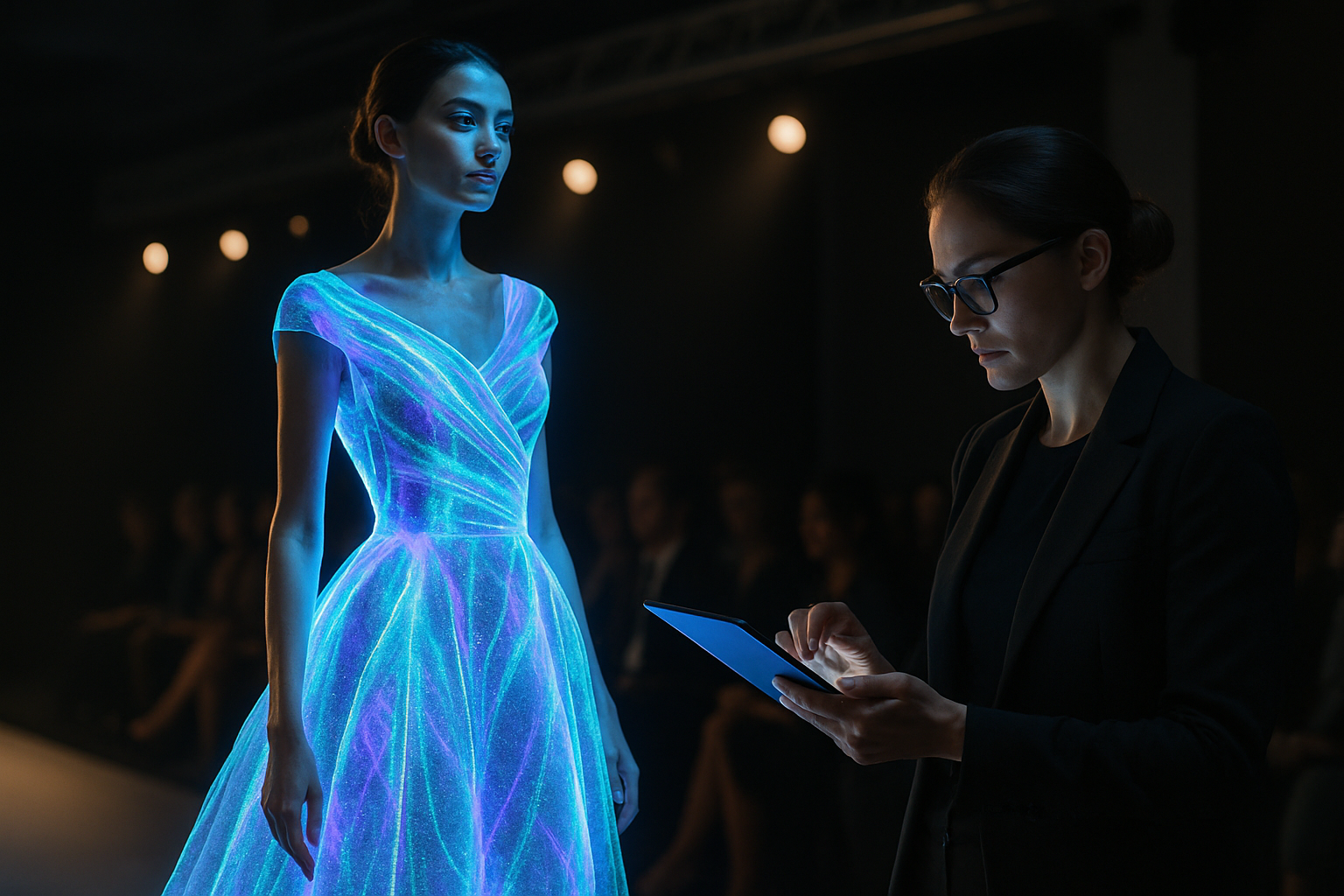Holographic Haute Couture: Fashion's Digital Frontier
In the ever-evolving landscape of fashion, a groundbreaking fusion of technology and haute couture is reshaping the industry. Holographic fashion, once confined to the realm of science fiction, has emerged as a cutting-edge trend that challenges traditional notions of design, sustainability, and consumer experience. This innovative approach to clothing creation is not only revolutionizing runway shows but also redefining the very essence of what we consider wearable art. As designers and tech innovators collaborate to push the boundaries of fashion, holographic garments are poised to transform how we interact with and perceive clothing in the digital age.

Technological Breakthroughs
The realization of holographic fashion required significant technological leaps. The development of flexible, lightweight holographic films and the miniaturization of projection systems were crucial milestones. Collaborations between fashion houses and tech companies led to the creation of fabrics embedded with microscopic holographic elements, capable of displaying dynamic, changeable patterns and images.
Runway Revolution
Holographic fashion made its first major splash on the runway in 2018, when a prominent Parisian fashion house unveiled a collection featuring garments that seemed to shimmer and change before the audience’s eyes. Models walked the catwalk in dresses that transformed from solid colors to intricate patterns, captivating viewers and igniting a global conversation about the future of fashion design.
Sustainability and Customization
One of the most compelling aspects of holographic fashion is its potential for sustainability. By allowing a single garment to display multiple designs, holographic clothing could significantly reduce the need for physical inventory, addressing issues of overproduction and waste in the fashion industry. Moreover, the technology enables unprecedented levels of customization, allowing wearers to change their outfit’s appearance with the touch of a button or through smartphone apps.
Challenges and Controversies
Despite its potential, holographic fashion faces several challenges. Critics argue that the reliance on technology may detract from the craftsmanship and tactile experience of traditional fashion. There are also concerns about privacy and data security, as smart holographic garments could potentially collect and transmit personal information. Additionally, the high cost of production currently limits accessibility to high-end designers and affluent consumers.
The Future of Holographic Couture
As technology continues to advance, the possibilities for holographic fashion seem limitless. Researchers are exploring ways to create holographic garments that respond to environmental stimuli, such as temperature or sound, further blurring the lines between fashion and interactive art. The integration of augmented reality (AR) with holographic clothing opens up new avenues for social media interaction and digital self-expression.
Impact on the Fashion Industry
The rise of holographic fashion is prompting a reevaluation of traditional industry practices. Fashion schools are incorporating digital design and holographic technology into their curricula, preparing the next generation of designers for a more technologically integrated future. Retailers are exploring ways to showcase and sell holographic garments, potentially revolutionizing the e-commerce experience for fashion.
Cultural Significance
Holographic fashion represents more than just a technological novelty; it reflects broader cultural shifts towards digital integration and fluid identity expression. As our lives become increasingly intertwined with digital realms, holographic clothing offers a tangible bridge between physical and virtual self-representation. This fusion of fashion and technology raises profound questions about the nature of identity, creativity, and human expression in the digital age.
Conclusion
Holographic haute couture stands at the forefront of fashion innovation, offering a glimpse into a future where clothing is not just worn but experienced. As designers, technologists, and consumers continue to explore this new frontier, holographic fashion has the potential to redefine not only what we wear but how we interact with our clothing and express ourselves in an increasingly digital world. While challenges remain, the allure of dynamic, sustainable, and infinitely customizable garments ensures that holographic fashion will continue to captivate and inspire for years to come.





